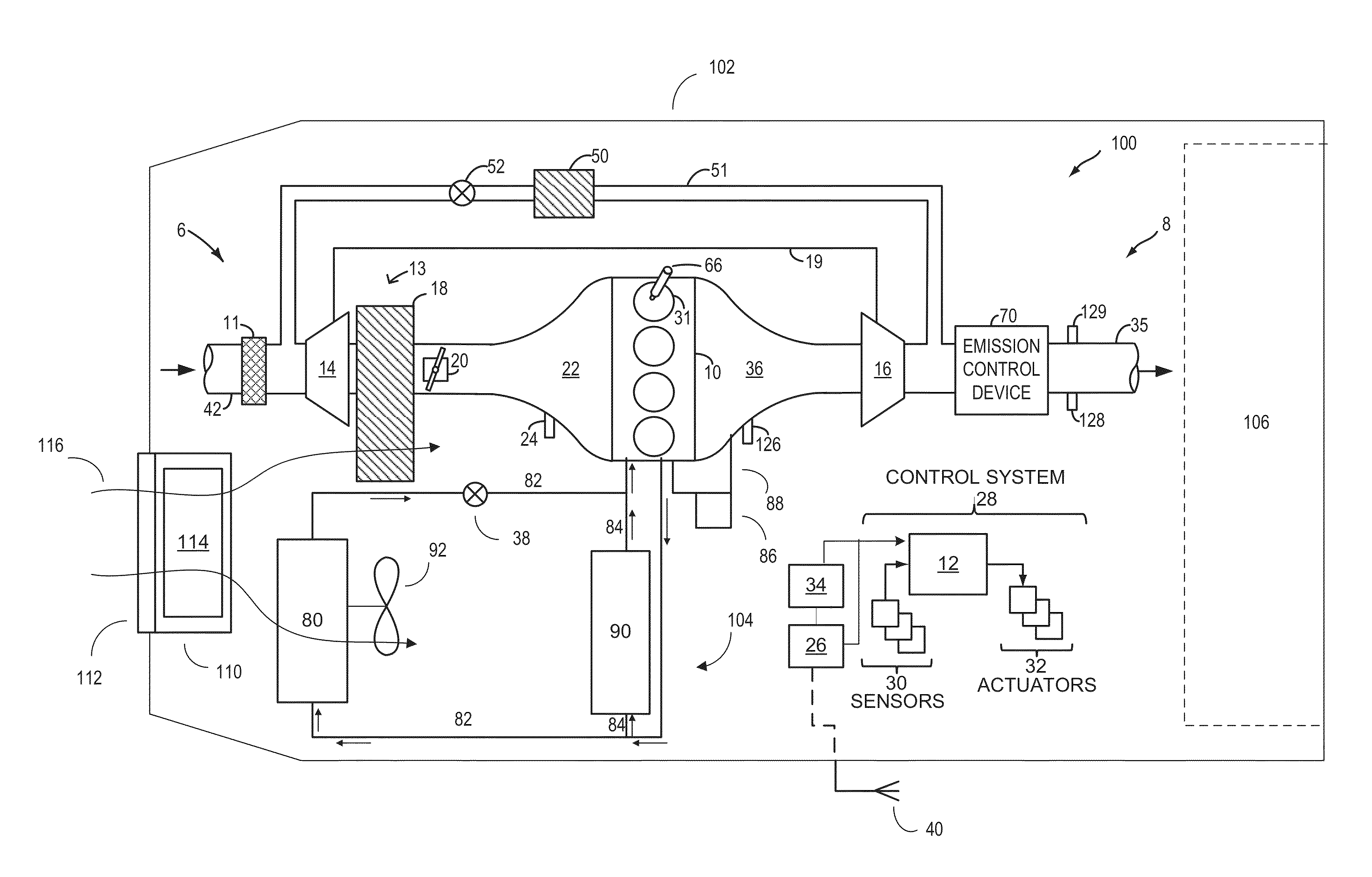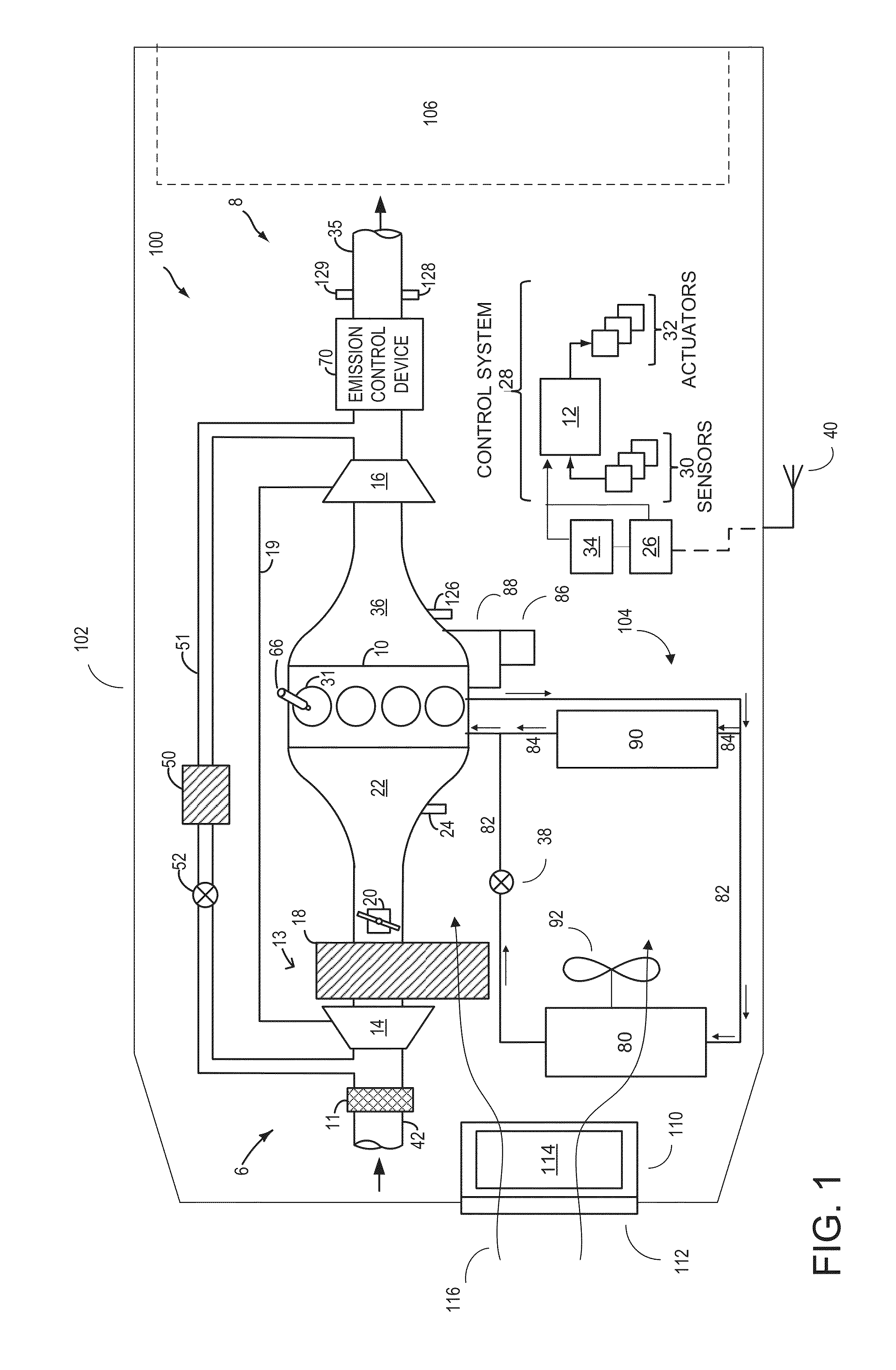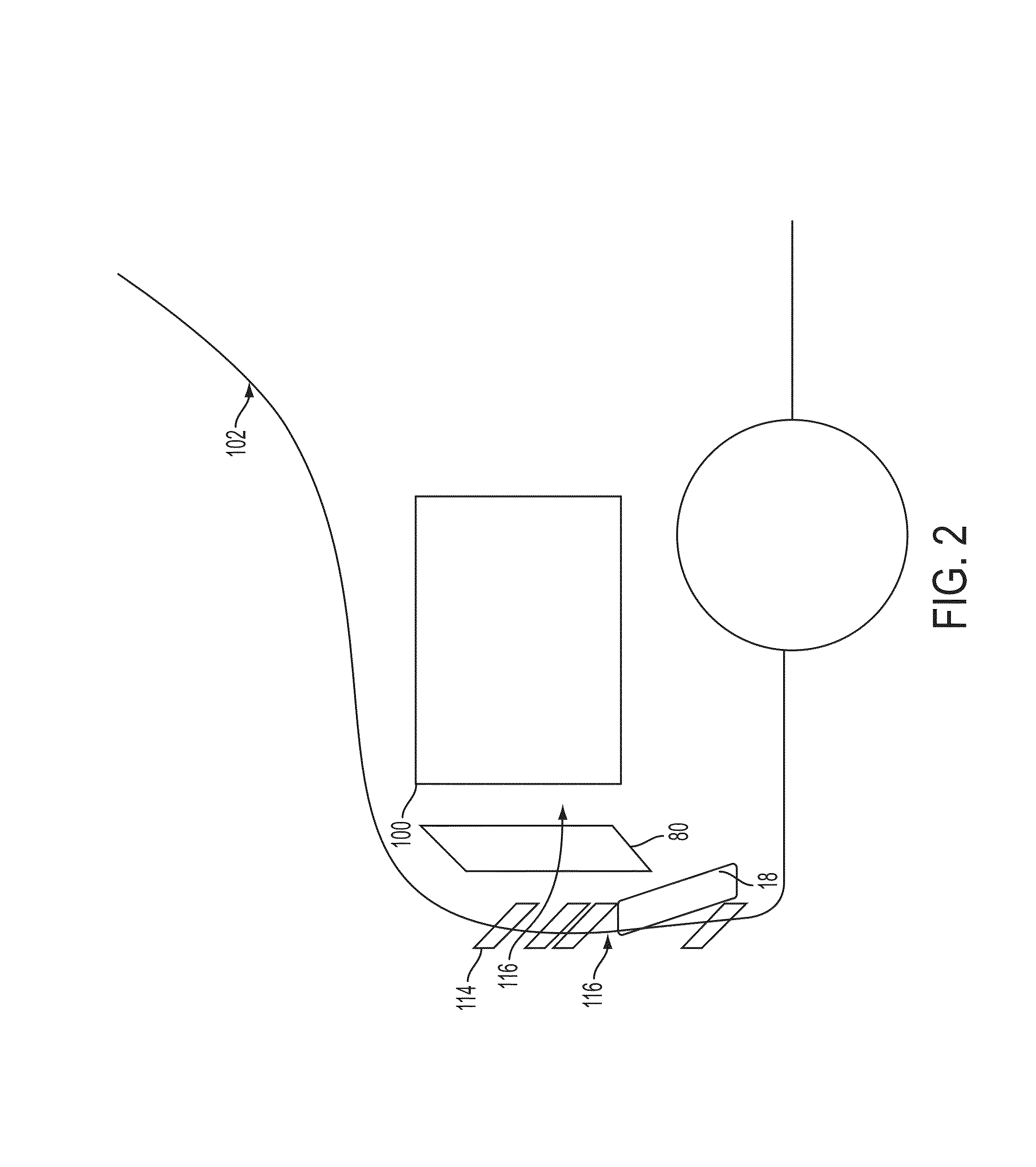Engine control coordination with grille shutter adjustment and ambient conditions
a technology of engine control and ambient conditions, which is applied in the direction of lighting and heating apparatus, heating types, ventilation systems, etc., can solve the problems of increasing the chance of engine misfire, affecting the safety of the engine, so as to increase the temperature of the engine over optimal levels, and reduce the overall level of condensa
- Summary
- Abstract
- Description
- Claims
- Application Information
AI Technical Summary
Benefits of technology
Problems solved by technology
Method used
Image
Examples
Embodiment Construction
[0014]The following description relates to systems and methods for adjusting vehicle grille shutters in response to engine cooling parameters, condensate formation in a CAC, and non-driven vehicle conditions. Grille shutter operation for a vehicle engine system, such as the engine system in FIG. 1, may increase engine cooling, reduce condensate formation in the CAC, and optimize vehicle fuel economy. Opening of the grille shutters, such as those shown in FIG. 2, increases air flow through the vehicle front end, supplying cooling air flow to a radiator and CAC. Adjusting air flow to the CAC, via grille shutters, may change the efficiency of the CAC by moving the dew point location (such as shown in FIG. 3), thus reducing corrosion. An engine controller may be configured to perform a control routine, such as the routine of FIG. 4-6, to adjust grille shutter opening based on a non-driven vehicle condition, condensate formation in the CAC, outside weather conditions, and engine temperat...
PUM
 Login to View More
Login to View More Abstract
Description
Claims
Application Information
 Login to View More
Login to View More - R&D
- Intellectual Property
- Life Sciences
- Materials
- Tech Scout
- Unparalleled Data Quality
- Higher Quality Content
- 60% Fewer Hallucinations
Browse by: Latest US Patents, China's latest patents, Technical Efficacy Thesaurus, Application Domain, Technology Topic, Popular Technical Reports.
© 2025 PatSnap. All rights reserved.Legal|Privacy policy|Modern Slavery Act Transparency Statement|Sitemap|About US| Contact US: help@patsnap.com



